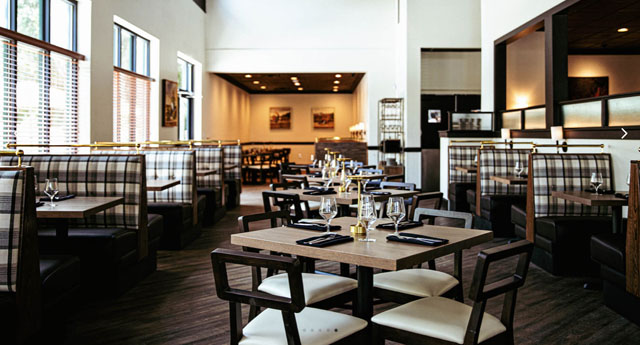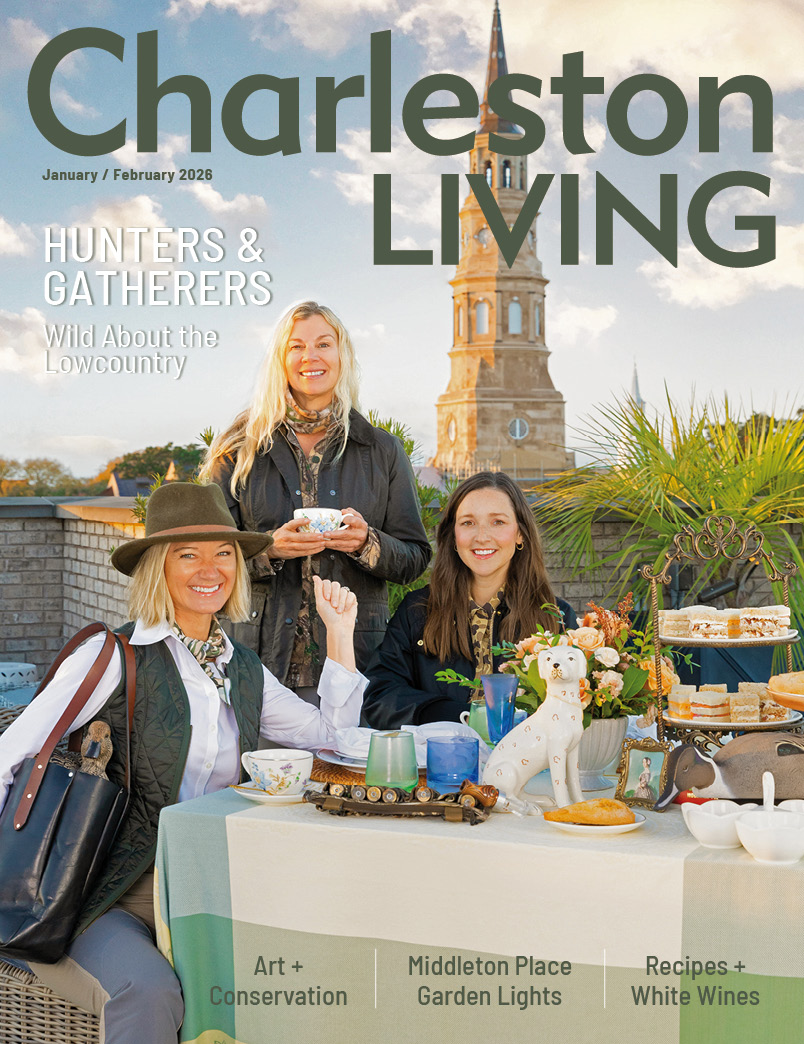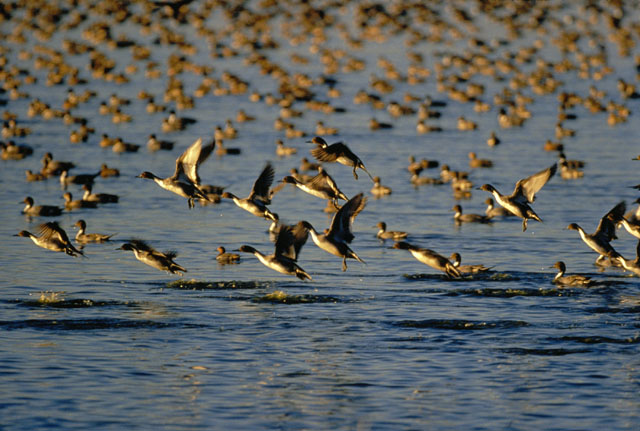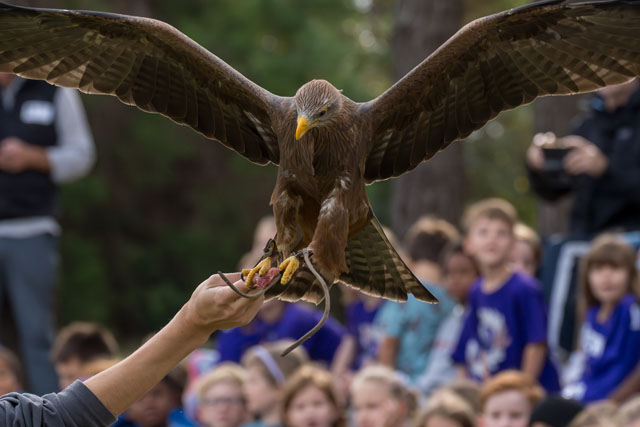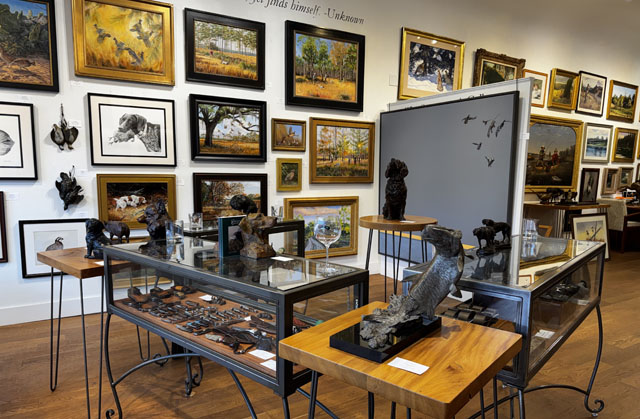Go Explore!
03 Sep 2025
Locals take back the Lowcountry this fall
September-October 2025
Written By: By PAMELA JOUAN
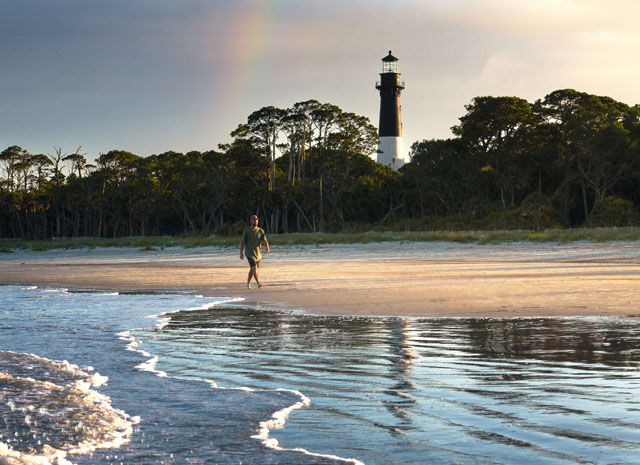
As fall settles over the Lowcountry, a hush replaces the summer buzz. The tourists have gone, the air has softened, and the golden light of autumn invites us to slow down and look closer. It’s the perfect time to reclaim Charleston—our beaches, marshes, trails, and tucked-away treasures. This season, we explore the beauty in our own backyard, where hidden gems and nature’s finest moments await just around the corner.
Take back nature—
St. Phillips Island at Hunting Island State Park
Just off the coast of Beaufort, South Carolina, the 4,680-acre St. Phillips Island remains one of the Lowcountry’s best-kept secrets—accessible only by boat and teeming with unspoiled beauty. Once the private refuge of billionaire conservationist Ted Turner, who bought it in 1979 to prevent development, the island is now managed by South Carolina’s state park system alongside neighboring Hunting Island.
“Fall is one of my absolute favorite times of the year on St. Phillips to explore the island’s vast trail system,” says Operations Manager John Alexander. “It is made up of ancient dune systems nestled in the heart of an old-growth maritime forest. Something incredibly rare to find in South Carolina.” The island’s unique ecology earned it designation as a National Natural Landmark. Birders will be in awe: up to five million migratory birds pass overhead nightly along the East Coast flyway. The cooler weather also means wildlife is more active.
Coastal Expeditions exclusively offers ferry service and small-group guided trips, limited to just 28 people. “It feels like you have the entire island to yourself,” Alexander adds. “A rare opportunity to disconnect from the crowds and reconnect with nature. My tip: Keep your head on a swivel, stay curious, and be ready to explore.”
At nearby Hunting Island State Park, Park Manager Kirby Brady recommends beachcombing, forest hikes, and hands-on nature programs from fishing clinics to hands-on art sessions. “As an overnight guest, renting a campsite or cabin becomes especially more comfortable, as the air is less thick and the insects begin to fade. Autumn here offers more than a destination—it’s a peaceful escape that refreshes the spirit.”
For more info and times go to:
southcarolinaparks.com/hunting-island/st-phillips-island
Take back the wild—
Botany Bay Beach in Edisto
Erosion has sculpted Botany Bay Beach into a hauntingly beautiful ‘boneyard’ of sun-bleached trees, their limbs frozen in the surf. In fall, the crowds thin and the raw magic of this place reveals itself. “Botany Bay becomes very quiet after the rush of summer dies down,” says Erin Weeks, Media & Communication Coordinator at South Carolina Department of Natural Resources. “The beach changes shape as marsh relics become exposed, bringing in resting and feeding shorebirds.” It’s also a fantastic spot for surf fishing. Explore it at low tide, because at high tide it’s inaccessible.
Before heading out, always check the deer and dove hunt schedule—when the park is closed—however it is always open to the public on Sundays. Check here for the calendar and free public programming throughout the fall at: public-lands-scdnr.hub.arcgis.com/pages/botany-bay-hp-wma
Take back your legacy—
Hike and bike in the ACE Basin
This fall, trade crowds for quiet and explore the ACE Basin—one of the largest undeveloped estuaries on the East Coast. Named for the Ashepoo, Combahee and Edisto Rivers, the basin is a breathtaking blend of natural beauty and cultural history. Author Mary Alice Monroe chose it as the setting for “Where the Rivers Merge” for good reason: it’s a place where wildlife and stories thrive.
“Many South Carolinians think of the ACE Basin as pristine wilderness—and while it does represent one of the largest intact ecosystems on the Atlantic coast, it's far from an untouched landscape,” says Brianna Goodwin, ACE Basin volunteer coordinator at the South Carolina Department of Natural Resources. “Human hands have shaped the ACE Basin for millennia, ranging from Indigenous peoples who left massive shell rings to the enslaved Africans who were forced to dig and maintain vast acres of rice fields. These echoes of human management are still visible—quite literally—in the ACE Basin. Today, a diverse group of private and public landowners work together to steward these lands primarily to conserve beautiful coastal landscapes, and the wildlife and traditions they support.”
Meaning: This is their gift to you.
Need a place to start? Check out the ACE Trail at acetrail.org—three fairly flat miles ideal for walking, biking, general exercise, and birdwatching. As with Botany Bay, be sure to check the scdnr.org calendar for days when the area is closed for hunting.
Take back the day outside—
Kiawah Beachwalker Park & Picnic Area BBQ
“As fall settles in, Kiawah Beachwalker Park becomes a peaceful retreat where the beauty lingers long after the summer crowds have gone,” says Beachwalker Park Manager Charlie Vance. “The days may be shorter, but there’s still plenty to enjoy—from sun-filled beach strolls and dolphin strand feeding at Captain Sam’s Inlet, to laid-back family picnics with stunning views of the Kiawah River.”
So do just that. Bring the family or a group of friends. Gather supplies intentionally and fire up one of the grills at the riverside picnic area for a feast to complement the view. Here, even a simple barbecue feels magical.
This stretch of beach is more than beautiful—it’s welcoming. Dogs are treated like guests of honor, from a treat at the gatehouse to off-leash freedom from October through February where the shore is their playground. Vance reminds us that cleanup is a breeze thanks to the park’s convenient Dog Washing Station.
Whether it’s family, food, furry friends—or all three—Kiawah Beachwalker Park is where fall days are meant to linger. For more info and times go to: ccprc.com/1411/Kiawah-Beachwalker-Park.
Take back local ingredients—
Stono Market & Tomato Shed Cafe in Wadmalaw
“Fall is the perfect time to visit us. The pace slows down, the air gets crisp, and everything feels a little more rooted in tradition and flavor,” says owner Barbara Ambrose. “Even though we’re right on Main Road, our café still feels like a step back in time: Lowcountry—warm, welcoming, grounded. After the busy summer season, it becomes a space where locals can slow down and enjoy a relaxed lunch surrounded by familiar faces. No rush, no fuss, just good food and good company.”
Ambrose explains that their market and café are deeply tied to the rhythms of the land. “The changing seasons play a big role in what we offer. As the weather starts to cool, visitors can expect to find hearty, comforting dishes on our café menu that highlight what’s still coming in from the fields—think squash, greens, sweet potatoes and fall tomatoes. Our market stays stocked with local produce, homemade casseroles, and seasonal baked goods, making it easy to take a taste of the season home.” @stonomarketandtomatoshedcafe
Take back the dining table—
Lost Isle on John’s Island
Imagine having a backyard restaurant that landed on the New York Times 2024 Top 50 list and was named Southern Living’s favorite restaurant in 2025. That’s Lost Isle—a walk-in-only, open-air dining experience that’s somehow both nationally acclaimed and blissfully under-the-radar. Set beneath the trees with twinkling chandeliers, the restaurant’s live-fire kitchen turns out wood-fired dishes using ingredients from area purveyors. The ambiance, says the team, is what keeps guests coming back. “Our staff, the lighting, the foliage, the music—it all creates a uniquely laid-back experience that resonates with guests,” they explain. “The scenic backdrop and the elevated, laid-back environment is a welcomed escape from the hustle and bustle of everyday life.”
In the fall, as cooler weather rolls in and fires crackle and scent the air, Lost Isle feels like an enchanted hideaway. “When the sun sets and the chandeliers glow, it creates the most magical atmosphere,” they say. Complimentary blankets add warmth, and the seasonal menu shifts with cozy touches—like carrots, new fall accompaniments, and cocktails infused with pumpkin and autumn produce. @lostislejohnsisland
Take back what’s in your backyard—
Charleston Fall Tours of Homes
The Fall Tours presented by the Preservation Society of Charleston invite locals to rediscover the city’s layered beauty at a quieter, slower pace. This month-long series (October 1-31) of House & Garden Tours, Insider’s Tours, and guided Walking Tours takes participants beyond familiar streets into private homes, gardens and spaces that contribute to our city’s character. Each small-group experience is thoughtfully curated to maximize the educational experience, led by expert historians, architects and passionate homeowners.
From downtown to Sullivan’s Island, classical ironwork to mid-century design, each tour highlights Charleston’s evolving architecture and cultural landscape. Whether you’ve lived here for decades or just a few years, the Fall Tours offer a rare opportunity to see Charleston through fresh eyes, gaining deeper appreciation for the history and craftsmanship that surround us every day—one room, one garden, one story at a time.
For more information go to: preservationsociety.org/fall-tours
Take back stolen moments—
Relax at Pitt Street Bridge
Take back stolen moments at the Pitt Street Bridge, where history and nature converge. Once the sole connection between Mount Pleasant and Sullivan’s Island, this former plank-and-barrel crossing now invites quiet reflection. As you walk, you tread the same path once used by the H.L. Hunley crew in 1864, trolley passengers in the early 1900s, and generations before you.
Here, the marsh breathes around you, carrying the briny scent of pluff mud. Herons, ospreys, and egrets dip and skim the water’s surface, while sandpipers, terns, and seasonal visitors like wood storks and black skimmers move across the mud in jagged movements. Oyster beds glisten at low tide, and the sun rises to your left before setting by the Ravenel Bridge, casting pastel hues across the water.
Benches line the way, a perfect pause for watching tides and stars, reading books or getting lost gazing into the horizon. This is Charleston’s history, gently unfolding with every step.
Take back a look at the past—
Hampton Plantation State Historic Site in McClellanviile
Step into the past at Hampton Plantation State Historic Site, where a guided tour of the Georgian-style mansion (12–2 p.m. daily, $10, advance sign-up required) offers a rare look inside one of South Carolina’s most storied houses. Once home to poet laureate Archibald Rutledge, the mansion overlooks quiet remnants of rice fields once carved into the Santee Delta by enslaved Africans.
“Being off the highway and buffered by the Francis Marion National Forest, it gets quiet enough I sometimes forget that cars and planes and crowds are a thing,” says Park Manager Hannah E. Marley. “You can walk around and definitely get a sense of the undisturbed forests and creeks that were originally here.”
In fall and winter, 100-year camellias bloom, a welcome burst of color, while Eastern wild turkeys roam the misty mornings. On the Enslaved Settlement Trail that winds through a wooden section of the park, visitors can see rice embankments and the foundation of a slave dwelling.
“The old oak trees and remains of the rice fields and the quiet in particular make me really feel like I’m in the Lowcountry,” muses Marley.
For more info and times go to: southcarolinaparks.com/hampton
Take back slowing it down—
Kayak to Sandy Island and Wacamaw in Georgetown
As the summer crowds disperse and cooler temperatures settle in, fall becomes the ideal time for locals to rediscover the Waccamaw River. “There’s not as much river traffic, and it’s more comfortable so you can stay out longer on the water,” says Mike F. Eady, lead kayak and fishing guide for Black River Outdoors Center. “Plus the wildlife is more active as the temperatures fall. White-tailed deer, alligators, otters and other animals that usually hide in the water because of the heat, become more active. And now birders can easily spot migrating species now visible through thinning trees.”
Guided eco-tours to Sandy Island launch from Murells Inlet. Kayakers glide north of the island, where few people venture aside from scientists and state workers. “It’s peaceful, like stepping back in time,” says Eady. “You’re not just looking at nature—you’re in it, soaking it in the way it was meant to be.”
These immersive guided eco tours explore the Waccamaw’s rich cultural past, from its days as home to the Waccamaw tribe and as a key trade route between Georgetown and inland settlements. “You can feel the history when you slow down,” Eady says.
Tours run year-round. Bring your own kayak or call to rent one in advance. For more info go to: blackriveroutdoors.com

